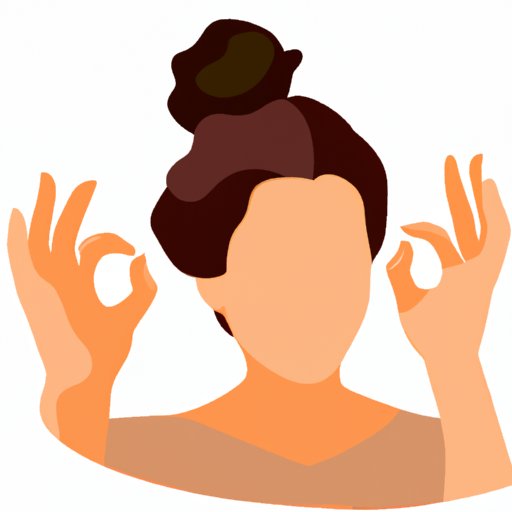
5 Proven Techniques to Help Reduce Anxiety Immediately
Living in the modern world comes with a slew of causes of anxiety. It is vital to understand how to reduce anxiety levels swiftly and effectively since anxiety can lead to health issues and the inability to perform daily duties. In this article, we will discuss five proven techniques for reducing anxiety immediately. Practicing these techniques in the moment can provide immediate relief and promote relaxation.
Breathe Deeply and Mindfully
One of the most immediate ways to reduce anxiety is to practice deep breathing. Deep, mindful breathing can help slow down heart rate, decrease blood pressure, and relax tense muscles, providing a quick, calming effect on both the body and mind.
To breathe deeply and mindfully:
- Close your eyes and sit up straight with your feet flat on the floor
- Place one hand on your stomach and the other on your chest
- Inhale slowly and deeply through your nose, feeling your stomach expand as you inhale
- Hold your breath for a few seconds
- Exhale slowly through your mouth, feeling your stomach deflate as you exhale.
Repeat this process for several minutes, focusing your attention on the sound and sensation of the breath. This breathing technique will help reduce anxiety levels, promoting calmness and relaxation.
Visualization techniques
Visualization is a powerful tool to help reduce anxiety levels. When an individual visualizes a peaceful and calming scene or scenario, it helps to shift the mind’s focus away from anxiety-inducing thoughts or situations. Encouraging oneself to see one’s thoughts positively can have a direct, positive effect on mood and reduce anxiety levels.
Here are some visualization techniques:
- Creating a mental image of a calming place such as a beach, forest, or garden
- Thinking of a happy experience or moment in your life
- Repeating positive affirmations to build confidence and strength
It is important to practice visualization in a calm, quiet, and comfortable environment, ideally seated with eyes closed. With practice, visualization techniques can become a useful tool for reducing anxiety levels and promoting relaxation.
Progressive muscle relaxation
Progressive muscle relaxation is another technique to reduce anxiety levels quickly. Tension in the muscles can cause and prolong anxiety. Therefore, a quick technique to release muscle tension can help promote relaxation capacities.
To practice progressive muscle relaxation:
- Starting from the top of the body, tense and hold the muscles tightly for ten seconds
- Relax the muscles, focusing on the sensation of relaxation
- Move downward from the top of the body, repeating the same procedure with each group of muscles such as shoulders, arms, chest, legs and toes
This technique directs the user to focus the attention on the difference between tension and relaxation. With gentle repetition, the body will automatically become relaxed, thus reducing anxiety.
Mindful meditation
Meditation is a powerful, calming practice that can be used to reduce anxiety levels. Mindful meditation is one of the best techniques to reduce anxiety, as it engages the mind and body to observe without judgment of the feeling prevailing at the moment. With regular meditation practice, resilience builds, thus reducing anxiety in everyday life.
To practice mindful meditation:
- Find a comfortable, quiet, and isolated place where you can sit comfortably
- Closing your eyes and breathing deeply, focusing on the feeling of the breath entering and leaving the body, engage in thought observation observe the thoughts arriving and leave the mind
- If the attention drifts away from the breath, gently redirect it to the breath as the center of focus.
- Continue this practice for several minutes
Even a few minutes of mindful meditation can help reduce anxiety levels and provide a sense of peace and relaxation.
Gratitude exercises
Gratitude exercises help reduce anxiety levels by promoting the shift of one’s perspective from negative thoughts to positive ones. Gratitude exercises help individuals focus on the positive aspects of their life, finding good things in their surroundings, from big things to the little ones that can be taken for granted.
To practice gratitude exercises, write down things you are grateful for, whether it is a memory, a person or place you love, personal talents you possess, or something you appreciate about the present moment.
Practicing gratitude regularly with a written list, verbal or mentally rehearsed list, helps develop a habit of focusing on positive aspects of life, promoting positive emotions, hence reducing anxiety levels.
Conclusion
Anxiety is increasingly becoming prevalent in modern life, but there are ways to reduce it quickly and effectively. In the moment, techniques like deep breathing, visualization, progressive muscle relaxation, meditation, and gratitude exercises can all help reduce anxiety levels and promote relaxation.
It is essential to experiment and find what works best for individual readers and incorporate techniques that work best for them in daily life to reduce anxiety levels. When individuals use these techniques regularly, resilience can build up, reducing anxiety in everyday life.





